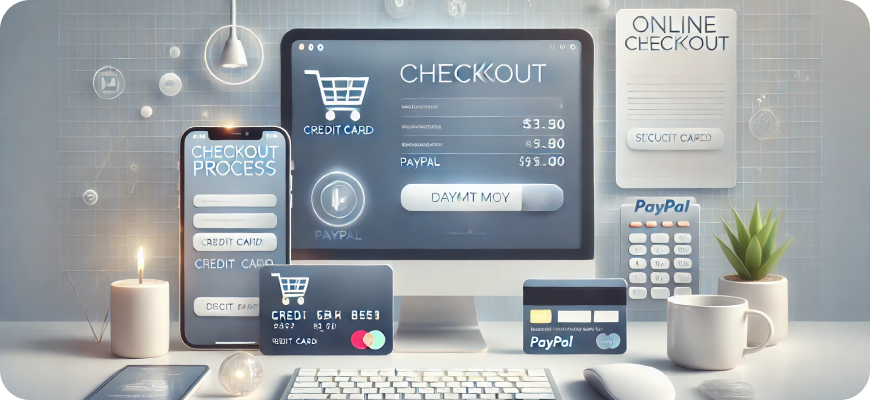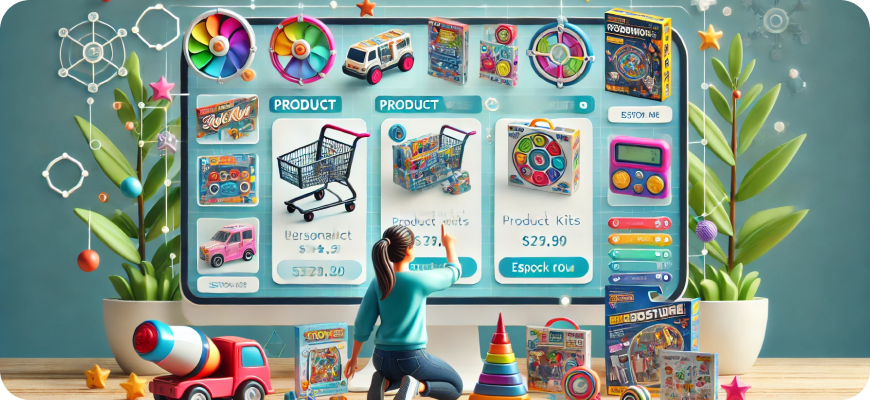How to Decrease Cart Abandonment Rate
Cart abandonment is a common challenge for ecommerce businesses. Despite a customer’s initial interest in a product, they may leave the site without completing their purchase, resulting in lost revenue and missed opportunities. A high cart abandonment rate can have a significant impact on your business’s bottom line. Fortunately, there are effective strategies to decrease cart abandonment and improve conversions. This article explores actionable techniques to keep customers engaged and drive them toward completing their purchases.

Understanding Why Customers Abandon Their Carts
Before diving into solutions, it’s essential to understand the main reasons customers abandon their carts. Common reasons include:
- Unexpected costs: Additional fees, such as shipping or taxes, can catch customers off guard, making them reconsider the purchase.
- Complex checkout process: A lengthy or confusing checkout experience can frustrate customers, leading them to abandon the process.
- Account creation requirements: Requiring customers to create an account can create friction, especially for new visitors.
- Security concerns: Customers may hesitate to complete the purchase if they feel the site isn’t secure.
- Lack of payment options: Limited payment choices can be a barrier, especially for customers who prefer specific methods like PayPal or digital wallets.
- Unclear return policies: Uncertainty about return or refund policies can deter customers from making a purchase.
- Distractions or lack of urgency: Many customers browse without intending to buy immediately. A lack of urgency or incentives can make it easy to leave the purchase for later.
Strategies to Decrease Cart Abandonment
1. Optimize Your Checkout Process
A seamless, user-friendly checkout process can significantly reduce cart abandonment. Simplify the steps required to complete a purchase and remove any unnecessary obstacles.
- Use a one-page checkout: Streamline the checkout process by consolidating all steps on a single page. This can make the process faster and less intimidating.
- Auto-fill form fields: Use auto-fill features for fields like address and contact details to save customers time.
- Show progress indicators: If your checkout process has multiple steps, display a progress bar to show customers how close they are to completing their purchase.
- Eliminate unnecessary fields: Only ask for essential information, and avoid lengthy forms that can deter customers from completing their purchase.
2. Provide Transparent Pricing
Unexpected costs are one of the top reasons for cart abandonment. Being transparent about all fees upfront can help build trust and encourage customers to proceed with their purchase.
- Display shipping and tax costs early: Include estimated shipping and tax costs on the product or cart page so customers aren’t surprised at checkout.
- Offer free shipping: If possible, offer free shipping, as this can be a major incentive for customers. Alternatively, you could set a free shipping threshold to increase average order value.
- Highlight any discounts or promotions: Make sure that discounts or promotions are clearly applied in the cart to show customers the value they’re getting.
3. Enable Guest Checkout
Requiring customers to create an account can be a major barrier, especially for first-time buyers who may not be ready to commit. Offering guest checkout provides a frictionless option.
- Allow guest checkout: Make guest checkout available so customers can complete their purchase without creating an account.
- Encourage account creation post-purchase: After the purchase is complete, encourage customers to create an account to save their information for future purchases.
4. Offer Multiple Payment Options
Offering a variety of payment options increases the likelihood of customers finding a method that suits their needs, making it easier for them to complete their purchase.
- Include popular payment methods: In addition to credit and debit cards, include options like PayPal, Apple Pay, Google Pay, and other digital wallets.
- Offer Buy Now, Pay Later (BNPL) options: BNPL services, such as Klarna or Afterpay, can be particularly appealing for customers who want flexibility in payment terms.
- Highlight secure payment options: Display trust signals like security icons and SSL certificates to reassure customers that their payment information is safe.
5. Display Trust Signals
Trust is essential for any online transaction. Displaying trust signals can reassure customers about the security of their personal and payment information.
- SSL certificates: Ensure your site is HTTPS-secured, and display the padlock icon in the browser address bar.
- Trust badges: Show trust badges, such as payment provider logos and security seals, near the checkout button.
- Customer reviews and ratings: Display reviews and ratings on product pages to build credibility and social proof.
6. Simplify the Navigation Between Cart and Product Pages
Customers may want to review their selections or add more items before checking out. Ensuring an easy navigation flow between the cart and product pages improves the overall shopping experience.
- Cart preview: Allow customers to view their cart contents without leaving the current page. This can prevent disruptions to the shopping flow.
- Clear navigation buttons: Provide clear navigation options to return to shopping or to product pages from the cart.
- Persistent cart feature: Implement a persistent cart feature so customers’ items are saved if they navigate away or come back later.
7. Use Exit-Intent Popups
Exit-intent popups can be an effective way to capture customers who are about to leave the site without completing their purchase. These popups can offer incentives or encourage them to stay.
- Offer a discount or promotion: Show an exit-intent popup offering a discount, free shipping, or a limited-time deal to encourage customers to complete their purchase.
- Highlight cart contents: Remind customers of the items in their cart and how close they are to completing their purchase.
- Collect email addresses: If customers aren’t ready to buy, use the exit-intent popup to collect their email so you can follow up later.
8. Send Cart Abandonment Emails
Cart abandonment emails are a proven strategy for recovering abandoned carts. These automated emails remind customers of the items they left in their cart and encourage them to return and complete their purchase.
- Send a series of reminders: Start with a gentle reminder shortly after the cart is abandoned, followed by another email 24 hours later and a final reminder within a few days.
- Include product images and descriptions: Include images and details of the abandoned items in the email to remind customers of what they left behind.
- Offer an incentive: Consider offering a small discount or free shipping to encourage customers to complete their purchase.
9. Provide Clear Return and Refund Policies
Customers are more likely to complete a purchase if they know they can return or exchange items easily. Clear and transparent return policies build trust and confidence.
- Display return policies prominently: Place links to your return policy on product pages, in the cart, and at checkout.
- Offer hassle-free returns: Make the return process as straightforward as possible to reduce concerns.
- Communicate refund timelines: Let customers know when they can expect a refund if they need to return an item.
10. Use Retargeting Ads
Retargeting ads allow you to re-engage customers who visited your site and added items to their cart but left without purchasing.
- Personalize retargeting ads: Show ads that feature the specific items the customer left in their cart.
- Offer an incentive: Include a discount or offer in the retargeting ad to encourage customers to come back and complete their purchase.
- Use multiple platforms: Display retargeting ads on multiple platforms, such as Google, Facebook, and Instagram, to reach customers wherever they spend time online.
11. Create a Sense of Urgency
Creating a sense of urgency can encourage customers to complete their purchase before they miss out.
- Display low-stock alerts: Show alerts like “Only a few left in stock” to encourage customers to act quickly.
- Use countdown timers: For time-sensitive promotions or flash sales, use countdown timers to create urgency.
- Limited-time offers: Offer limited-time discounts or deals to incentivize quick decisions.
12. Optimize for Mobile Users
With more customers shopping on mobile devices, a mobile-optimized checkout experience is essential for reducing cart abandonment.
- Responsive design: Ensure your website is fully responsive and adapts to different screen sizes.
- Touch-friendly buttons: Make sure buttons are large enough to tap easily, and use streamlined forms for mobile users.
- Mobile payment options: Offer mobile payment options, like Apple Pay and Google Pay, to make checkout faster and easier.
13. Display Product Thumbnails in the Cart
Visual reminders of the items in the cart can keep customers engaged and excited about their purchase.
- Show product images: Display images of the items in the cart to remind customers of their selections.
- Include essential details: Provide details such as product name, quantity, size, and price to help customers review their order.
14. Implement Live Chat Support
Live chat can be incredibly useful for answering last-minute questions and resolving concerns that might lead to cart abandonment.
- Real-time assistance: Offer real-time chat support on product and checkout pages to assist customers with any issues.
- Proactive chat invitations: If a customer spends a long time on the cart or checkout page, trigger a chat invitation offering help.
- Automated chatbots: Use chatbots to answer common questions or guide customers through the checkout process.
15. Track and Analyze Cart Abandonment Metrics
To improve your cart abandonment strategy, it’s important to monitor key metrics and analyze data.
- Abandonment rate: Track the percentage of customers who abandon their cart at various stages of the checkout process.
- Customer behavior: Analyze customer behavior to understand where and why they drop off.
- Test and optimize: Continuously test different elements of the checkout process, such as button colors, copy, and form fields, to find what works best.

Conclusion
Reducing cart abandonment requires a combination of strategies that focus on removing barriers, enhancing the customer experience, and maintaining engagement throughout the checkout process. By understanding why customers abandon their carts and implementing solutions such as a streamlined checkout, transparent pricing, retargeting campaigns, and multiple payment options, you can minimize cart abandonment and maximize conversions. Investing in a seamless, customer-centric shopping journey not only boosts sales but also builds trust and loyalty, paving the way for long-term success in the competitive ecommerce landscape.






